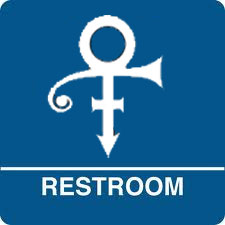The “Battle of the Bathrooms” is heating up across the nation, what with two separate, at-odds local and state government measures making the news this week.
In South Dakota, the governor is poised to sign a bill that would require public school students to use bathrooms and other facilities that correspond to their biological sex, which the bill defines as “a person’s chromosomes and anatomy as identified at birth.”
Meanwhile, the city of Charlotte, NC this week passed a law allowing transgender folks to choose public bathrooms that correspond to whatever gender they identify with. This measure has drawn the ire of the state’s governor and a majority of state legislators, who are threatening legislative intervention to undue the city ordinance.
These two actions fall on the heels of numerous other related measures making the rounds in states and municipalities across the country, all of which beg the question as to which public bathroom and/or locker room is appropriate for transgendered individuals of either sex…whether former, current or in transition?
Public bathrooms can be inherently awkward as is—adding transgendered usage into the equation ups the potential awkward ante, for both the normal-gendered folks, and the transgendered themselves. And the level of awkwardness is likely dependent upon the extent of transition.
Take Kaitlyn (the former “Bruce”) Jenner. He/she has done some serious work at trying to look like a woman, and now kind of does. But even though she’s lost the adam’s apple and now has breasts, he’s still sporting a Johnson and the twins between his legs. Kaitlyn can sing, “I am woman, hear me roar” until the cows come home, but it must be difficult to feel womanly when he’s in the bathroom.
I imagine that most people, male and female, would feel awkward sharing bathroom/locker room space with him/her. One would think that it’s also awkward for Jenner, and/or anyone else in that situation of being between the sexes.
Consider also the potential bathroom awkwardness of being forced to use the bathroom based on anatomy. A woman transitioning into a man would potentially freak people out when going into the woman’s room looking like a man, and vice versa for the trans woman forced to go into the men’s room, even though looking like a woman.
The easy overall solution, and one which has been pushed by various school districts,  municipalities, and state governments is unisex or gender-neutral bathrooms. And while cost is one limiting factor, the greater barrier appears to be the LGBT community, which feels that forcing transgendered to use such bathrooms stigmatizes or otherwise marginalizes them. Apparently, the use of such bathrooms as an option delegitimizes the self-identification of transgendered people, and self-identfication should trump all else.
municipalities, and state governments is unisex or gender-neutral bathrooms. And while cost is one limiting factor, the greater barrier appears to be the LGBT community, which feels that forcing transgendered to use such bathrooms stigmatizes or otherwise marginalizes them. Apparently, the use of such bathrooms as an option delegitimizes the self-identification of transgendered people, and self-identfication should trump all else.
And the LGBT lobby is fighting unisex and gender neutral bathrooms in most situations in which this compromise solution has been adopted, filing suit in numerous states across the country alleging discrimination and segregation. The U.S. Department of Education has sided with the LGBT community on the issue, asserting that schools must allow students to use the bathroom corresponding to the gender of which they identify, or risk losing federal funding.
OK, so the rights of transgendered are important, but what of everyone else? Should the rights of the few supersede the rights of the many? Should transgendered folks be allowed to pee wherever they please, or should their bathroom usage conform to anatomy?
Hash-It-Out!
—M.J. Moye





